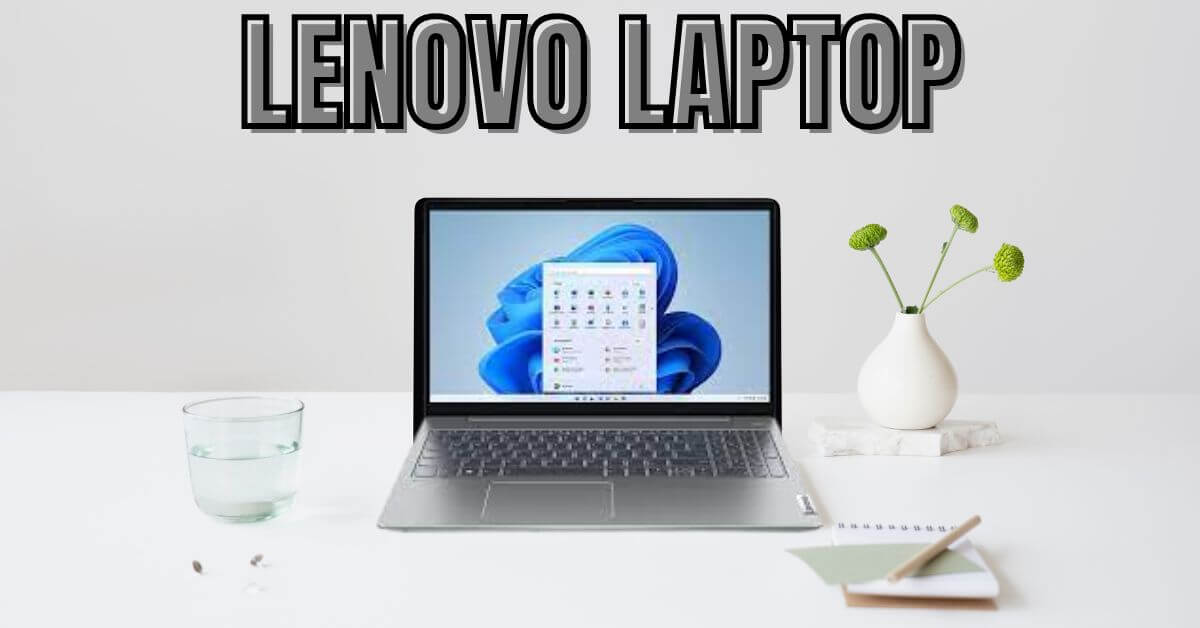Washing machines have become essential household appliances in today’s fast-paced world. In Bangladesh, where manual labor is still prevalent, washing machines have made life easier for many households. However, with so many brands and models available in the market, it can be challenging to determine which washing machine to buy and at what price. In this blog, we’ll take a closer look at the current washing machine price in Bangladesh, explore the factors that influence these prices, and provide some tips on how to choose the best washing machine for your needs and budget. Whether you’re a budget-conscious shopper or looking for high-end features, this guide will help you make an informed decision when it comes to buying a washing machine in Bangladesh.

Washing Machine
A washing machine is a household appliance that is designed to clean and wash laundry. It consists of a drum or a cylinder that rotates to agitate clothes in a mixture of water and detergent, effectively removing dirt and stains. The washing machine has revolutionized the way we do laundry, saving time and effort compared to the traditional method of hand washing.
Washing machines come in various types and sizes to suit different needs and lifestyles. Top-loading machines are the most common and affordable, with a lid on the top that lifts up for laundry loading and unloading. Front-loading machines, on the other hand, have a door on the front and use less water and energy compared to top-loading machines. They also tend to be more expensive.
There are also specialized washing machines for specific laundry needs, such as portable washing machines for small apartments or RVs, and washer-dryer combos that can both wash and dry clothes in the same machine. Some washing machines also come with additional features such as steam cleaning, delayed start, and automatic load sensing.
When choosing a washing machine, it’s important to consider factors such as the size of your household, the types of clothes you regularly wash, and your budget. Additionally, it’s essential to look for a machine that is energy-efficient, as this will save you money in the long run and is better for the environment.
The washing machine is an essential household appliance that has made laundry an easier and more efficient task. With the variety of types and features available, there’s a washing machine out there for every need and budget.
Washing Machine all Parts Name
A washing machine has several parts that work together to clean and wash laundry. Here are the names of the main parts of a washing machine
Drum or Cylinder: The large, circular container where the laundry is loaded and agitated with water and detergent to clean it.
Agitator: A mechanism in the center of the drum that moves and twists the clothes around to help loosen dirt and stains.
Motor: Powers the drum and agitator to rotate and wash the clothes.
Transmission: Transmits power from the motor to the drum and agitator.
Pump: Drains the water from the machine after washing.
Inlet and Outlet Hoses: The hoses that bring water into the machine for washing and drain it out during the wash cycle.
Control Panel: The interface where the user can select wash settings and cycle options.
Lid or Door: The part of the machine that covers the drum and provides access for loading and unloading laundry.
Timer: Controls the length of the wash cycle.
Dispenser: The compartment where detergent, fabric softener, and bleach are loaded and released into the wash cycle.
Spin Basket: The inner basket that spins at high speeds to wring out excess water from the clothes.
Suspension Springs and Dampers: The parts that absorb shock and vibrations during the wash cycle.
These are the main parts of a washing machine, although some models may have additional features and components, such as a dryer or a steam-cleaning function.
Washing Machine Size
Washing machine sizes vary depending on the capacity and type of machine. The most common sizes for washing machines are:
Compact or Portable: These machines are typically less than 2.5 cubic feet and are designed for small apartments, RVs, or as a secondary machine for a laundry room.
Standard Top-Loading: These machines are usually between 3.5 to 5 cubic feet and are the most common type of washing machine. They are ideal for larger households and can handle larger loads.
High-Capacity Top-Loading: These machines are larger than standard top-loading machines and have a capacity of more than 5 cubic feet. They are ideal for families with a lot of laundries or for washing larger items such as comforters.
Front-Loading: These machines are typically between 3.5 to 5 cubic feet and are designed to be more energy-efficient and use less water than top-loading machines. They are ideal for small spaces and can be stacked with a dryer.
High-Capacity Front-Loading: These machines are larger than standard front-loading machines and have a capacity of more than 5 cubic feet. They are ideal for families with a lot of laundries or for washing larger items such as comforters.
When choosing a washing machine size, consider the size of your household, the amount of laundry you do, and the space available for the machine. A machine that is too small will require more frequent loads, while a machine that is too large may use more energy and water than necessary. It’s important to find the right balance between capacity, efficiency, and convenience.
Washing Machine Accessories
Washing machine sizes vary depending on the capacity and type of machine. The most common sizes for washing machines are:
Compact or Portable: These machines are typically less than 2.5 cubic feet and are designed for small apartments, RVs, or as a secondary machine for a laundry room.
Standard Top-Loading: These machines are usually between 3.5 to 5 cubic feet and are the most common type of washing machine. They are ideal for larger households and can handle larger loads.
High-Capacity Top-Loading: These machines are larger than standard top-loading machines and have a capacity of more than 5 cubic feet. They are ideal for families with a lot of laundries or for washing larger items such as comforters.
Front-Loading: These machines are typically between 3.5 to 5 cubic feet and are designed to be more energy-efficient and use less water than top-loading machines. They are ideal for small spaces and can be stacked with a dryer.
High-Capacity Front-Loading: These machines are larger than standard front-loading machines and have a capacity of more than 5 cubic feet. They are ideal for families with a lot of laundries or for washing larger items such as comforters.
When choosing a washing machine size, consider the size of your household, the amount of laundry you do, and the space available for the machine. A machine that is too small will require more frequent loads, while a machine that is too large may use more energy and water than necessary. It’s important to find the right balance between capacity, efficiency, and convenience.
Washing Machine Electricity Consumption
The electricity consumption of a washing machine can vary depending on factors such as the size and type of machine, the wash settings used, and the frequency of use. Here are some general guidelines for estimating the electricity consumption of a washing machine:
Energy Star Ratings: Look for washing machines with an Energy Star rating. These machines are designed to be more energy-efficient and use less electricity than non-rated models.
Load Size: The larger the load size, the more electricity the machine will consume. Try to wash full loads whenever possible to minimize electricity consumption.
Water Temperature: Washing machines that use hot water will consume more electricity than those that use cold water. Use the cold or warm water setting instead of hot whenever possible to save energy.
Spin Cycle: Machines with higher spin speeds will extract more water from the clothes, reducing drying time and energy consumption. Use the highest spin speed available for the type of fabric being washed.
Cycle Length: Shorter wash cycles will use less electricity than longer cycles. Choose the shortest cycle that will effectively clean the laundry.
Frequency of Use: Using the washing machine less frequently can reduce overall electricity consumption. Consider washing larger loads less often instead of smaller loads more frequently.
Washing machines use between 300-500 watts of electricity per load, or about 2-3 kWh per week for a typical household. However, the actual electricity consumption can vary widely depending on the factors listed above. It’s a good idea to consult the machine’s manual or manufacturer’s website for specific information on the electricity consumption of your washing machine.
Washing Machine Fitting
Proper washing machine fitting is essential for ensuring the efficient and safe operation of the machine. Here are the steps for fitting a washing machine:
Choose a Location: Select a location for the washing machine that is close to a water supply and a grounded electrical outlet. Make sure the floor is level and able to support the weight of the machine.
Connect Water Supply: Attach the washing machine hoses to the water supply valves. The hot water hose should be connected to the hot water valve and the cold water hose to the cold water valve. Tighten the hoses with pliers, being careful not to overtighten.
Attach Drain Hose: Attach the drain hose to the drain pipe or standpipe. The end of the hose should be at least 18 inches above the floor to prevent water from siphoning out of the machine.
Plug In: Plug the washing machine into the grounded electrical outlet.
Level the Machine: Use a level to make sure the machine is level both front-to-back and side-to-side. Adjust the feet as necessary to achieve a level position.
Test the Connections: Turn on the water supply valves and run a test cycle to check for leaks or other issues.
Secure the Machine: Use the provided brackets to secure the machine to the wall or floor to prevent it from tipping over during use.
It’s important to follow the manufacturer’s instructions for fitting the washing machine and to ensure that all connections are tight and secure. If you are unsure about the fitting process, it’s recommended to consult a professional plumber or appliance installer for assistance.
Washing Machine Cover
A washing machine cover is a protective cover designed to keep a washing machine clean and free from dust when not in use. Here are some benefits of using a washing machine cover:
Protection from Dust and Debris: A washing machine cover prevents dust, dirt, and other debris from accumulating on the machine, which can affect its performance and appearance.
Moisture Protection: A cover can help protect the machine from moisture damage in humid or damp environments.
Extend the Lifespan: A washing machine cover can help extend the lifespan of the machine by preventing damage from dust, moisture, and other environmental factors.
Aesthetics: A cover can improve the appearance of the laundry room by hiding an older or less attractive washing machine.
Easy to Clean: Covers are typically made of materials that are easy to wipe clean, such as polyester or vinyl.
When selecting a washing machine cover, be sure to choose one that is the correct size and shape for your machine. Most covers are designed to fit standard-sized machines, but it’s important to double-check the measurements before purchasing. Look for covers made from durable materials that will withstand frequent use and provide adequate protection for your machine.
Washing Machine Stand
A washing machine stand is a specially designed platform or structure that raises a washing machine off the ground and provides additional support and stability. Here are some benefits of using a washing machine stand:
Stability: A washing machine stand provides a sturdy and stable base for the machine, reducing the risk of wobbling or tipping during use.
Protection: The stand helps protect the machine from damage caused by moisture, dust, and other environmental factors.
Ergonomics: Raising the washing machine to a comfortable height makes it easier to load and unload laundry without bending or stooping.
Storage: Some washing machine stands come with built-in storage compartments for laundry supplies, making them a space-saving solution for small laundry rooms.
Mobility: Some stands come with wheels or casters, allowing the washing machine to be easily moved to different locations.
When selecting a washing machine stand, be sure to choose one that is the appropriate size and weight capacity for your machine. Look for stands made from sturdy materials, such as steel or aluminum, that will provide adequate support and stability. Consider features such as built-in storage or mobility, depending on your needs and space constraints. Additionally, it’s important to follow the manufacturer’s instructions for installation to ensure that the stand is properly secured and safe to use.
Washing Machine and Dryer
A washing machine and a dryer are two separate appliances that are often used together for laundry purposes. Here are some key features and benefits of each:
Washing Machine:
- A washing machine is designed to clean clothes by agitating them with water and detergent.
- There are several types of washing machines available, including top-loading, front-loading, and portable models.
- Many washing machines come with a variety of settings and features, such as different wash cycles, water temperature control, and energy-saving options.
- Washing machines can save time and energy compared to hand-washing clothes and can handle larger loads of laundry.
Dryer:
- A dryer is designed to remove moisture from clothes after they have been washed.
- There are several types of dryers available, including vented and ventless models, and gas or electric-powered models.
- Many dryers come with a variety of features, such as temperature control, moisture sensors, and energy-saving options.
- Dryers can save time and energy compared to air-drying clothes and can be especially useful in humid or rainy climates.
When choosing a washing machine and dryer, it’s important to consider your specific needs and preferences, as well as factors such as budget, space constraints, and energy efficiency. Many manufacturers offer combination washer-dryer units that combine both appliances in one unit, which can be a convenient space-saving option for small apartments or laundry rooms. However, these units may not be as efficient or durable as separate washing machine and dryer units. Ultimately, the best choice will depend on your individual circumstances and laundry needs.
What Are The Benefits of Washing Machines?
Washing machines offer several benefits over traditional hand-washing methods, including:
- Time-saving: Washing machines can handle larger loads of laundry and complete a wash cycle in a fraction of the time it would take to hand-wash clothes.
- Energy and water efficiency: Many modern washing machines are designed to use less energy and water compared to hand-washing clothes, which can save money on utility bills and reduce your environmental impact.
- Better cleaning performance: Washing machines are designed to agitate clothes with water and detergent, which can result in a deeper and more effective cleaning compared to hand-washing.
- Convenience: With a washing machine, you can start a load of laundry and attend to other tasks while the machine does the work. Many machines also come with features such as programmable wash cycles and delay start options, which can make laundry even more convenient.
- Gentle on fabrics: Many washing machines offer specialized settings for delicate fabrics, which can help prevent damage and extend the life of your clothes.
Washing machines offer a convenient, efficient, and effective way to clean clothes, saving time, energy, and resources in the process.
How Many Types of Washing Machines
There are several types of washing machines available, including:
- Top-loading washing machines: These machines have a vertical drum that can be accessed from the top. They are often more affordable than front-loading machines and can be easier to load and unload, but may use more water and energy.
- Front-loading washing machines: These machines have a horizontal drum that can be accessed from the front. They are generally more energy and water-efficient than top-loading machines, but can be more expensive and may require more maintenance.
- Portable washing machines: These machines are designed for small living spaces or travel and can be moved easily. They are often compact and can be connected to a sink or other water source.
- High-efficiency washing machines: These machines are designed to use less water and energy than traditional machines, and may come with features such as moisture sensors and variable speed motors.
- Combination washer-dryer units: These machines combine a washing machine and a dryer in one unit, which can be a space-saving option for small apartments or laundry rooms.
- Semi-automatic washing machines: These machines require some manual input, such as adding water and moving clothes from the washing tub to the spinning tub. They are often more affordable than fully automatic machines.
- Fully automatic washing machines: These machines require no manual input and can handle the entire washing and spinning cycle automatically.
The type of washing machine you choose will depend on your individual needs and preferences, as well as factors such as budget, space constraints, and energy efficiency.
Washing Machine Price in Bangladesh
The price of a washing machine in Bangladesh can vary depending on several factors such as the brand, size, features, energy efficiency, and where you buy it from.
Here is the list of washing machine price in Bangladesh below
Walton Washing Machine Price in Bangladesh

| Model | Capacity | Price |
| WWM-AFC90W | 9/5.5 Kg | Tk.66,950.00 |
| WWM-AFT80W | 8.0 Kg | Tk.51,950.00 |
| WWM-AFE80H | 8.0 Kg | Tk.47,650.00 |
| WWM-TWG90 | 9.0 Kg | Tk.18,850.00 |
| WWM-AFM60 | 6.0 Kg | Tk.35,250.00 |
| WWM-TQM150 | 15 Kg | Tk.50,950.00 |
| WWM-ATG80 | 8 Kg | Tk.33,150.00 |
| WWM-TWG90M | 9.0 Kg | Tk.18,250.00 |
| WWM-TSM80 | 8 Kg | Tk.30,950.00 |
| WWM-TWI80 | 8 Kg | Tk.39,650.00 |
| WWM-ATV80 | 8 Kg | Tk.35,550.00 |
| WWM-TTM70 | 7 Kg | Tk.25,950.00 |
| WWM-TTP60 | 6 Kg | Tk.22,950.00 |
| WWM-TWP100S | 10 Kg | Tk.16,490.00 |
| WWM-TWP85S | 8.5 Kg | Tk.17,650.00 |
| WWM-SAT90C | 9.0 Kg | Tk.18,850.00 |
| WWM-SAT80C | 8.0 Kg | Tk.18,250.00 |
| WWM-STP80 | 8.0 Kg | Tk.13,500.00 |
| WWM-SAS60 | 6.0 Kg | Tk.10,850.00 |
| WWM-KS90S | 9 Kg | Tk.18,850.00 |
| WWM-TWG90P | 9.0 Kg | Tk.17,950.00 |
| WWM-M80 | 8 Kg | Tk.18,250.00 |
| WWM-M70 | 7 Kg | Tk.17,550.00 |
| WWM-TWG90PN | 9.0 Kg | Tk.17,950.00 |
| WWM-TWG90 | 9.0 Kg | Tk.18,850.00 |
LG Washing Machine Price in Bangladesh

| Model | Capacity | Price |
|---|---|---|
| FH2J3T NPO | 8 KG | 75,000 Taka |
| F4J5TNP7S | 8.00 KG | 77.500 Taka |
| F4V5VYP0W | 9.00 KG | 88,500 Taka |
| F0L9DGP2S | 8.00 KG | 2,20,500 Taka |
| F4V5RGP2T | 7 KG | 1,28,000 Taka |
| WD551206RC | 9 KG | 2,33,500 Taka |
| F0K2CHK5T2 | 10 KG | 2,33,500 Taka |
| FH2J3QDNPO | 7 KG | 58,500 Taka |
| F4J5TNP3W | 8 KG | 76,800 Taka |
Samsung Washing Machine Price in Bangladesh
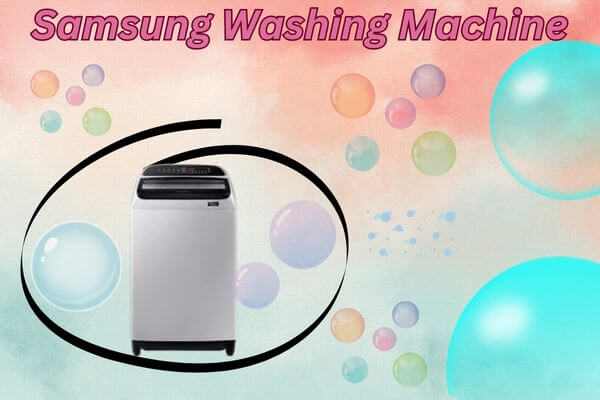
| Model | Capacity | Price |
| WW80TA046AX/S7 | 8.0 KG | 61,900 Taka |
| WW80T534DAX/S7 | 8.0 KG | 64,900 Taka |
| WW90TA047AX/LD | 9.0 KG | 61,900 Taka |
| WW90T734DBX/S7 | 9.0 KG | 71,900 Taka |
| WW91K54E0UX/TL | 9.0 KG | 76,900 Taka |
| WA75H4200SYUTL | 7.5 KG | 30,900 Taka |
| WA10T5260BVUTL | 10.0 KG | 49,900 Taka |
| WA90T5260BY/TL | 9.0 KG | 43,900 Taka |
| WA70H4000SYUTL | 7.0 KG | 28,900 Taka |
| WW80J4213GS/TL | 8 KG | 61,900 Taka |
| WA13J5750SV/SE | 13 KG | 63,900 Taka |
| WA90J5730SS/TL | 9 KG | 39,900 Taka |
| WA70N4560SS/IM | 7 KG | 37,900 Taka |
| WA70M4300HP/IM | 7 KG | 26,900 Taka |
Singer Washing Machine Price in Bangladesh
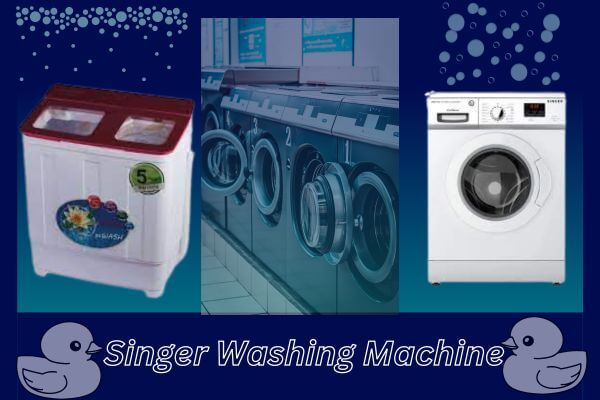
| Model | Capacity | Price |
| SWM7680SLP | 7.0 KG | 31,490 Taka |
| SWM 9870 SLP | 9.0 KG | 36,490 Taka |
| FW100AS | 10KG | 41,990 Taka |
| FWV100AS | 10.0 KG | 47,400 Taka |
| FW60APB | 6.0 KG | 22,199 Taka |
| WCV6602BW | 6.0KG | 36490 Taka |
| STD110LSDA | 11.0 KG | 21,490 Taka |
| STD80SFDA | 8.0 KG | 16,990 Taka |
| SWMFG786BD | 7.0KG | 41,490 Taka |
| SWMFB788BD | 7.0KG | 40,790 Taka |
Sharp Washing Machine Price in Bangladesh

| Model | Capacity | Price |
| ES-F120G | 12.0 KG | 40,900 Taka |
| ES-FW105D7PS | 10.5 KG | 88,900 Taka |
| ES-FW70EW | 7.0 KG | 49,900 Taka |
| ES-FW85SG | 8.5 KG | 53,00 Taka |
| ES-HFH014AS3 | 10 KG | 60,000 Taka |
| ES-HFH814AS3 | 8 KG | 55,000 Taka |
| ES-W85TWXT-SA | 8.5 KG | 35,900 Taka |
| ES-W110DS-S | 11 KG | 44,900 Taka |
| ES-W90EW-H | 9 KG | 34,900 Taka |
| ES-W80EW-H | 8 KG | 32,900 Taka |
| ES-X858 | 8.0 KG | 28,900 Taka |
Whirlpool Washing Machine Price in Bangladesh

| Model | Capacity | Price |
| WFC 80602RT-D | 8 KG | 62,900 Taka |
| WDC 80602RT-D 8 KG | 9 KG | 76,900 Taka |
| Whitemagic Elite | 7.5 KG | 33,690 Taka |
| Bloomwash Ultimate Care | 14 KG | 48,500 Taka |
| Whitemagic Elite | 7.5 Taka | 31,490 Taka |
Vision Washing Machine Price in Bangladesh
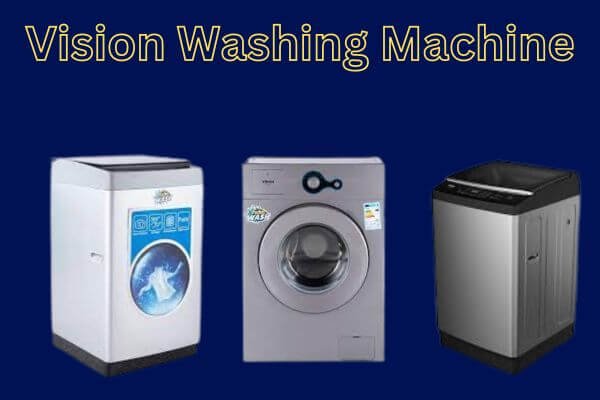
| Model | Capacity | Price |
| VISION Front Loading Washing Machine 8kg LUX 30 | 8 kg | 47,900 Taka |
| Vision Front Loading Washing Machine 6kg-SFL09 | 6 KG | 36,000 Taka |
| VISION Automatic Washing Machine 6kg M11 VE | 6 KG | 19,500 Taka |
| Vision washing Machine Top loading 13kg ,HTL-130G | 13 KG | 46,900 Taka |
| Vision Front Loading Washing Machine FLT80-8kg | 8 KG | 50,900 Taka |
| Vision Single Tub Washing Machine 3kg-L03 | 3 KG | 5,500 Taka |
| VISION Top Loading Washing Machine 8kg-ST-08 | 8 KG | 32,000 Taka |
| VISION Top Loading Washing Machine 8kg TL-08 | 8 KG | 33,500 Taka |
| Vision washing Machine Top loading 10.5kg ,HTL-105G | 10.5 kg | 40,900 Taka |
Panasonic Washing Machine Price in Bangladesh
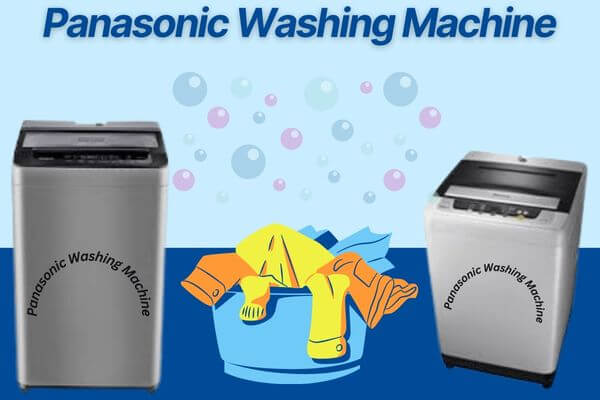
| Model | Capacity | Price |
| NA-127XB1WMY | 7 KG | 58,500 Taka |
| NA-140VG3 | 10 KG | 82,950 Taka |
| NAS085M1 | 8 KG | 78,800 Taka |
| NA-127XB | 7 KG | 56,200 Taka |
| NA-128XB | 8 KG | 60,150 Taka |
| NA-128XB | 7.5 KG | 46,300 Taka |
| NA-F75V7LRB | 7.5 KG | 45,300 Taka |
| NA-F80B5 | 8 KG | 50,650 Taka |
| NA-F90B5 | 9 KG | 52,300 Taka |
| NA-F75V7LRB | 7.5 KG | 45,300 Taka |
Bosch Washing Machine Price in Bangladesh

| Model | Capacity | Price |
| WAJ20170GC | 7 KG | 61,900 Taka |
| WAJ2017SGC | 7 KG | 75,900 Taka |
| WAJ2018SGC | 8 KG | 84,900 Taka |
| WTE84106GC | 7 KG | 54,900 Taka |
| WVG30460GC | 8 KG | 1,03,900 Taka |
| WAT2848XGC | 9 KG | 96,900 Taka |
| WTG86401GC | 9 KG | 1,32,900 Taka |
| WAW3256XGC | 9 KG | 1,89,900 Taka |
| WGA252X0GC | 10 KG | 1,19,900 Taka |
| WTN85423ME | 8 KG | 1,34,900 Taka |
| WAX32E91 | 10 KG | 1,59,900 Taka |
Haier Washing Machine Price in Bangladesh

| Model | Capacity | Price |
| HWM100-1678ES5 | 10 KG | 40,900 Taka |
| HWM120-1678ES5 | 12 KG | 45,900 Taka |
| HW90-BP14959S6 | 9 KG | 57,900 Taka |
| HW120-BP14959S6 | 12 KG | 68,900 Taka |
| HWM70-1269S5 | 7 KG | 25,500 Taka |
| HW100-B14929S3 | 10 KG | 63,900 Taka |
| HWM70-FD10829 | 7 KG | 44,900 Taka |
| HWM70-M1201 | 7 KG | 24,500 Taka |
| HWM80-M826 | 8 KG | 30,900 Taka |
| HWM100-M826 | 10 KG | 38,900 Taka |
| HW80-BP12929S3 | 8 KG | 51,900 Taka |
| HW80-IM12826C | 8 KG | 49,900 Taka |
| HWM80-826DNZP | 8 KG | 30,900 Taka |
| HWM75-707NZP | 7.5 KG | 29,900 Taka |
Hitachi Washing Machine Price in Bangladesh

| Model | Capacity | Price |
| SF-80XB | 8 KG | 42,500 Taka |
| BD-70CVE 3CS (SL) | 7 KG | 61,000 Taka |
| BD 90XAV 3C BK | 9 KG | 81,000 Taka |
| SF 110LJ | 11 KG | 35,700 Taka |
Jamuna Washing Machine Price in Bangladesh

| Model | Capacity | Price |
| XPB60-108S-1 | 6 KG | 12,800 Taka |
| XQB85-818-A | 8 KG | 28.800 Taka |
| XQB65-818-D | 6.5 KG | 23,800 Taka |
| JW2A7014EI | 7 KG | 42,880 Taka |
| JW2A8014EI | 8 KG | 46,880 Taka |
| JW2A1114EI | 10.5 KG | 53,880 Taka |
| XQB120-108S-A | 12 KG | 36,800 Taka |
| XQB100-858-D | 10 KG | 32,9980 Taka |
| XPB110-108S-5 | 11 KG | 18,800 Taka |
An Overview of Bangladeshi Prices
We strive to provide accurate and up-to-date information about the washing machine, including its price in Bangladesh. Our dedicated team gathers information from various online sources to ensure the reliability of the data. In the event of any inaccuracies, we sincerely apologize and suggest that you do your own research and comparisons before making a final purchase decision.
FAQ
It’s recommended to clean your washing machine every 2-3 months to remove any buildup of dirt, detergent, and fabric softener.
You should use a detergent that is specifically designed for use in washing machines. There are many brands and types available, including liquid, powder, and pod options.
While most clothes can be washed in a washing machine, some delicate fabrics may require special care or a gentle wash cycle to avoid damage.
What’s the difference between top-loading and front-loading washing machines?
Top-loading washing machines have a vertical drum that can be accessed from the top, while front-loading washing machines have a horizontal drum that can be accessed from the front. Front-loading machines are generally more energy and water-efficient than top-loading machines.
The lifespan of a washing machine can vary depending on factors such as usage, maintenance, and brand. On average, a washing machine can last between 8-12 years with proper care and maintenance.
The amount of water a washing machine uses can vary depending on the size and type of the machine. High-efficiency machines typically use less water than traditional machines.
Related Post:
Refrigerator Price in Bangladesh
Best Deep Freezer Price in Bangladesh
12 Best Brand Router Price in Bangladesh
10 Best Water Filter Price in Bangladesh
Conclusion
The price of washing machines in Bangladesh can vary depending on several factors, including the type, brand, and features of the machine. While some high-end models can be quite expensive, there are also many affordable options available that can provide reliable and efficient performance.
When shopping for a washing machine in Bangladesh, it’s important to consider your specific needs and budget, as well as the energy efficiency and durability of the machine. By comparing prices and features from different brands and retailers, you can find a machine that fits your needs and budget while also delivering the performance and convenience you need for your laundry routine.
A washing machine can be a valuable investment for households in Bangladesh, offering a convenient and efficient way to clean clothes while also saving time, energy, and resources in the process.



